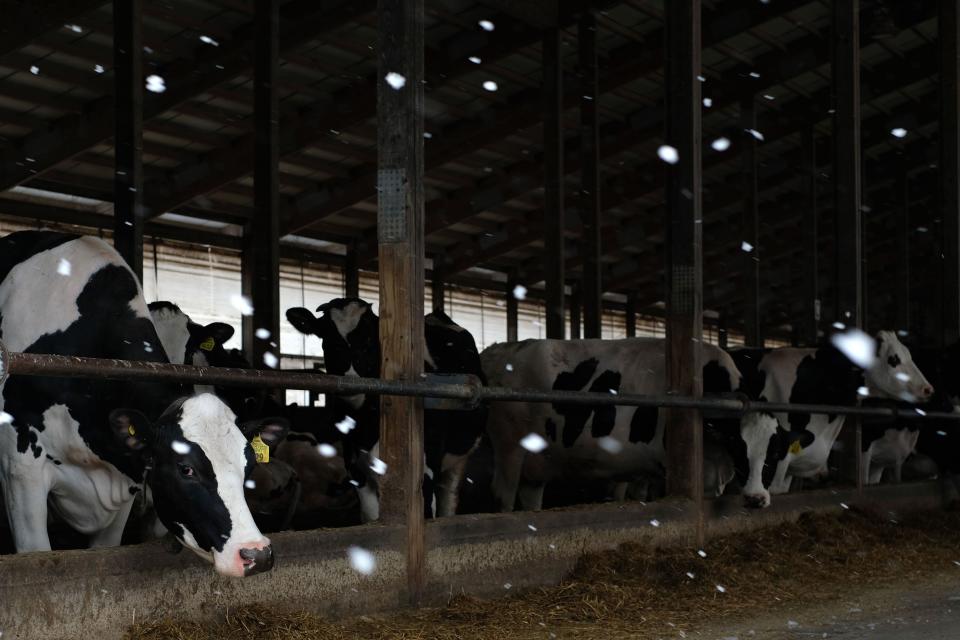Bird Flu Shot Hopes Dim as Tracing Woes Undercut Covid Lessons

(Bloomberg) -- US scientists haven’t gotten a handle on how to effectively track bird flu, three months after a Texas dairy worker was diagnosed with the virus. That’s impeding the ability to create a vaccine to protect against the spread among people.
Most Read from Bloomberg
Democrats Weigh Mid-July Vote to Formally Tap Biden as Nominee
Trump Immunity Ruling Means Any Trial Before Election Unlikely
Trump as President or Private Citizen: Why Supreme Court’s Immunity Ruling Is a Test
BlackRock Deal to Make Preqin’s Founder Richer Than Larry Fink
Bird flu’s health risk to the general public remains low, according to US officials. But if the virus becomes more dangerous, it’s unclear we’ll have a shot that works, according to Kate Broderick, a vaccine developer at Maravai LifeSciences Holdings, who’s helped develop shots against Ebola and Zika.
Broderick said that scientists don’t have a clear picture of the viral strain that’s currently circulating and whether the virus is more widespread than what’s been reported already. It’s “a complete guessing game,” Broderick said.
Federal health officials are trying to avoid a repeat of 2009 when there was a dearth of vaccine doses to combat the H1N1 swine flu outbreak. They’re also leaning on lessons learned from Covid on viral sequencing, which allows scientists to use evolving disease samples to identify new strains and update their shots.
But with bird flu, it’s been difficult to gather such data because federal health officials can’t conduct testing on farms without support from state authorities and access from farm owners. Farms worried about lost milk production have been reluctant to ramp up testing. Estimates show a 5,000-cow farm would lose $250,000 a week while infected.
The USDA recently said it was making progress to boost surveillance, with four states — Kansas, Nebraska, New Mexico, and Texas — now agreeing to test bulk milk tanks on dairy farms. Michigan has also launched an effort to find undetected infections among farmworkers.
Vaccine Hurdles
The US government has identified two possible vaccines for the current H5N1 bird flu strain. The US is testing them with GSK Plc, Sanofi SA and CSL Seqirus, according to Robert Johnson, who oversees the development of medical countermeasures at the Biomedical Advanced Research and Development Authority.
Johnson’s agency has stockpiled parts of a virus that a potential vaccine would target, known as antigens, and substances that boost the body’s immune response, known as adjuvants. Right now, the US government has the equivalent of 10 million doses of a bird flu vaccine and has ordered 4.8 million additional doses to be packed into vials.
The European Union has secured up to 665,000 doses of CSL Seqirus’ vaccine that matches the current strain for 15 member states. The four-year contract included an option to purchase as many as 40 million doses. Finland was the first country to offer the shots to poultry workers, even though no human detections have been reported.
But many of those shots were developed from older strains and may not be as effective at attacking the current version of avian flu, should it start infecting people.
“I can fairly confidently say the current vaccines are not raised against the strain that’s circulating now,” Broderick said.
Targeting a strain of the virus that spreads between people will likely require quickly developing a different shot, said Peter Hotez, a vaccine expert and dean of the National School of Tropical Medicine at Baylor College of Medicine.
Moderna Inc. and Pfizer Inc. have been in discussions with the US government about developing mRNA-based bird flu vaccines. Such technology would be able to be updated more quickly than traditional vaccines, many of which are grown in chicken eggs. Results from Moderna’s earlier stage trial are expected to be announced in the next few weeks.
Anticipating a form of the virus that starts spreading among people may be difficult, if not impossible, said Michael Osterholm, director of the Center for Infectious Disease Research and Policy at the University of Minnesota. “The question is: Do you have to wait until a pandemic virus emerges before you make a vaccine for it?” he said.
A CDC spokesperson said it has an “up-to-date picture of the virus with widespread surveillance.” GSK, CSL Seqirus and Sanofi said their vaccines could work with the current strains.
--With assistance from Riley Griffin.
Most Read from Bloomberg Businessweek
The Fried Chicken Sandwich Wars Are More Cutthroat Than Ever Before
Japan’s Tiny Kei-Trucks Have a Cult Following in the US, and Some States Are Pushing Back
RTO Mandates Are Killing the Euphoric Work-Life Balance Some Moms Found
The FBI’s Star Cooperator May Have Been Running New Scams All Along
©2024 Bloomberg L.P.

 Yahoo Finance
Yahoo Finance 